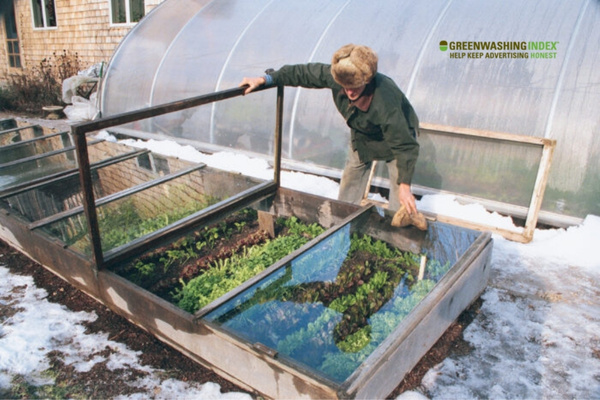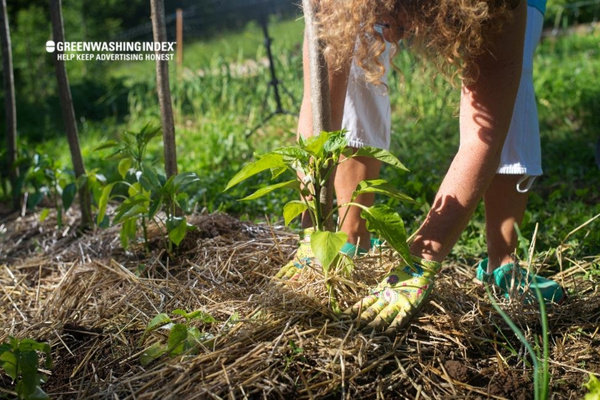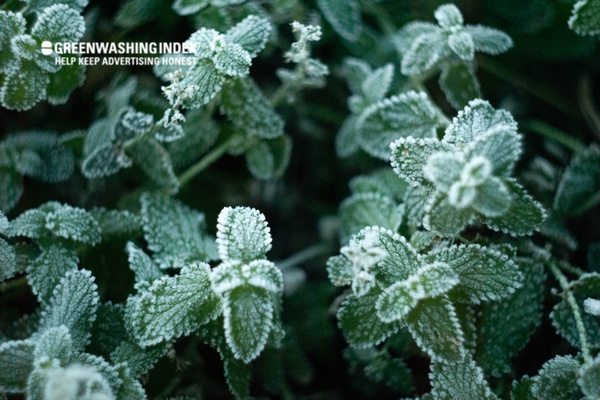Is your green thumb itching to dig into the earth despite the chill? If the dropping temperatures have you dreaming of lush veggies and blooming flowers, you’re ready to dive into the enchanting world of winter gardening.
Starting a garden during winter might seem like a task only for those living in mild climates, but with the right tips and tricks, almost anyone can enjoy fresh greens in the crisp cold air. Let me be your guide on this frosty adventure and uncover how your garden can thrive even when Jack Frost is nipping at your nose.
Mastering your garden during winter doesn’t mean you need to brave icy winds and frozen soil with hope alone. It starts with understanding what plants can endure chilly weather, preparing protective structures, and knowing how to nurture nature’s green treasures when many sleep under blankets of snow.
With a bit of planning and clever care, you’ll find that some plants actually prefer cool conditions! Savor sweet victories as root vegetables plumb up beneath frost-kissed foliage while leafy greens celebrate in cool comfort—all in your very own winter wonderland.
Understanding Winter Gardening Essentials
As the world around us takes on a hush under blankets of snow, winter gardening becomes a peaceful pastime. It’s like nurturing a tiny spark of life in the quiet calm of the colder months. I’ll share with you the crux of what this delightful activity entails and why it can be such a heartwarming experience even as temperatures drop.

Winter gardening involves taking care of plants during the cold months. Unlike in spring or summer, plants in winter face cold air, less sunlight, and sometimes snow. This means I need to know which plants can live in the cold and how to protect them.
In winter gardening, I prepare by picking out tough plants that don’t mind the chill. Some greens like kale and spinach, root vegetables like carrots and beets, and some flowers even bloom when it’s cold! But it’s not just about choosing the right plants—there’s more.
Here are key things I do in winter gardening:
- Pick Hardy Plants: Choose plants that survive in low temperatures.
- Protect From Cold: Use mulch or covers to keep plant roots warm.
- Mind The Sunlight: Find spots where my garden gets enough light during shorter days.
- Control Watering: Plants drink less in winter. I water only when needed.
- Watch For Pests: Some bugs still come around. I check my plants for these little critters often.
With these steps, I help my garden make it through the chilly season.
Why Take On Winter Gardening?
Taking on a garden during colder months comes with benefits that make it rewarding:
- Fresh Produce: Even when it’s snowing, I can pick fresh veggies from my garden instead of buying them.
- Healthier Plants: Some plants grow better without the stress from summer heat or insects.
- Enjoyable Activity: Gardening gets me outside and moving, which is great for staying active in winter.
- Wildlife Support: My winter garden offers food and shelter for birds and other wildlife looking for resources.
During these cooler times, watching over a garden provides unique joys—and fresh air! Plus, having greenery around combats those winter blues by keeping me connected to nature even as most of the world takes a sleepy break until spring.
By following simple tips for caring for my green friends amidst snowflakes and frosty mornings, I ensure both their survival and mine through enjoyment, all thanks to mastering the art of winter gardening!
Also Read: Indoor Greenhouse Magic: Grow Plants All Year!
Planning Your Approach to Winter Gardening
Winter can be tough, but that doesn’t mean your green thumb has to rest. In fact, with some good planning and the right approach, you can enjoy winter gardening and keep your love for growing plants alive through the colder months.

Let’s look at how to make the most of your garden when it’s cold outside.
Deciding on Your Winter Gardening Style
When setting up a garden for winter, think about what style works best for you and your space. There are a couple of options you might consider:
- Container Gardens: If you’re short on space or want something that’s easy to manage, containers are great. You can move them around if needed to catch more sunlight or shelter them from harsh weather.
- Containers are also excellent for controlling soil quality.
- When choosing containers, go for ones that won’t crack in the cold.
- In-Ground Plots: If you have more room in your yard, creating dedicated plots can be rewarding.
- In-ground gardens will need some prep work like mulching to protect plants from frost.
- These plots allow plants more room to grow which can be ideal for larger winter veggies.
It doesn’t matter which style you choose as long as it fits what you want from winter gardening.
Selecting Plants That Thrive in the Cold
Some plants do much better than others when the temperature drops. For a successful cold-weather garden, choose plants that can handle frost and don’t mind a bit of snow sometimes too. Here are some hardy choices:
- Root Vegetables: These veggies actually become sweeter after a frost!
- Carrots
- Beets
- Leafy Greens: They’re not only healthy but also very robust in the face of chilly weather.
- Kale
- Spinach
- Brassicas: These plants don’t mind cold; they grow well and taste great after exposure to frosts.
- Cabbage
- Brussels Sprouts
- Herbs: Believe it or not, some herbs can survive outside during winter:
- Thyme
- Rosemary
Make sure these get good drainage as they don’t like wet roots which could freeze.
Always check plant labels or ask at your local nursery before buying them; this ensures they’ll thrive in your specific winter conditions.
By carefully choosing both the type of garden and the plants within it, I find myself able to enjoy gardening all year round – even when there’s snow on the ground!
Preparing Your Soil For The Cold
Winter gardening can be a joyful challenge. To ensure your garden thrives during the colder months, it’s key to prepare with care. Here, I’ll share some crucial tips on how to prep your soil and when to plant your winter favorites.
Healthy plants start with healthy soil, especially during winter. Follow these steps for optimal plant health:
- Clear Old Plants: Remove dead plants and weeds from your garden beds. These can harbor pests and diseases that might hurt new plantings.
- Test The Soil: Check the pH balance of your soil. Most plants enjoy a pH between 6 and 7. If needed, add lime to increase pH or sulfur to decrease it.
- Add Compost: Blend in rich, organic compost to feed your soil. This boosts nutrients and improves drainage – both super important in cold-weather gardening.
- Mulch is a Must: Spread a thick layer of mulch over the soil surface after planting—this keeps roots warm and retains moisture.
- Plan for Drainage: Ensure water doesn’t pool around plants as this can freeze their roots! If necessary, raise beds slightly or add channels for excess water to flow away.
Taking these steps will create strong foundations for whatever you choose to grow this winter.
Timing Is Everything: When To Plant What?
To reap what you sow in winter gardening, timing plays a big part!
- Leafy Greens: Kale, spinach, and chard thrive in cooler weather; start these about 6 weeks before the first expected frost.
- Root Crops: Carrots and beets should go into cool ground; plant them about 8 weeks before the first frost so they have time to mature.
- Garlic & Onions: October is often perfect for planting garlic and onions because they need a cold period for proper development.
- Peas & Broad Beans: Aim to get these in around November—they’ll quietly grow over winter for an early spring harvest.
It’s not just “what” but “when” that makes all the difference in successful harvests come springtime when practicing winter gardening! By following these scheduling guidelines carefully tailored to cold-weather conditions, you give each crop its best shot at flourishing despite the chill.
Also Read: Self-Sufficient Garden: Top Reasons to Start This Spring!
Protecting Your Greens Against The Chill
When the chill of winter tries to nip at my delicate greens, I know it’s time to step up my game. The right techniques can be the difference between a thriving winter garden and a frozen wasteland. Let’s get into two important methods that keep my plants warm when the temperatures drop.

Insulation Techniques to Shield Plants
When it gets cold, plants shiver just like we do. Okay, maybe not shiver, but they sure feel the freeze! If I want my leafy friends to make it through winter, I need a game plan. Let me share some neat ways to keep my garden cozy when Jack Frost comes knocking.
Mulching is like tucking your plants in with a warm blanket. Here’s what you do:
- Grab some straws, leaves, or wood chips.
- Spread them around the base of your plants.
- Pile it up high enough to cover roots but not too thick that it smothers them.
This blanket keeps the ground from freezing and helps save those precious roots. Super simple yet super effective!
Now let’s talk cloches – these are like little mini greenhouses for each plant. Making them is a piece of cake:
- You can use clear milk jugs or plastic bottles with their bottoms cut off.
- Place them over your smaller plants and voilà – instant warmth!
Cloches trap heat from the sun during the day and keep your plant snug as a bug at night.
With these tricks up my sleeve, my winter garden has a fighting chance against old man winter!
Structures for Winter Gardening Warmth
What about when mulching and cloches aren’t enough? That’s where some nifty structures come into play.
First off – cold frames:
- Think of these as low-to-the-ground boxes with transparent tops.
- They catch sunlight and prevent heat escape which means under-the-hood warmth for lettuce or spinach.
Building one can be as simple as framing out an old window on hinges attached to a wooden box. Open it during sunny days; close it when frost bites.
Moving on to hoop tunnels:
- These look like tiny tunnels made with arched wires or pipes covered by plastic sheeting.
Here’s how to set one up:
- Stick hoops in the ground over your garden row
- Drape clear plastic over the top
- Secure the edges with rocks or soil so no chilly wind sneaks in
Ta-da! Now you’ve got a great spot for growing veggies even when it’s cold outside.
And if you’re really serious about this winter gardening thing, consider investing in a greenhouse:
A greenhouse is basically a big glass house where summer never ends – well inside at least!
Whether you buy one ready-made or go full-on DIY mode creating your own from old windows doesn’t matter; what counts is giving those cucumbers tropical vibes while snowflakes dance outside!
So there you have it – keeping my green buddies thriving in chilly weather isn’t rocket science! With mulch blankets, snug cloches, fabulous frames, and tunnels plus greenhouses galore – there’s no reason these greens can’t grow all year round!
Also Read: Greenhouse Gardening: Your Ultimate Guide to Aquaponics
Maximizing Winter Crop Growth
Winter gardening can be quite a challenge, but with the right approaches, you can keep your plants happy and healthy even in the cold months. There’s nothing like the joy of having a vibrant garden when most are dormant. Let’s talk about some solid strategies to make sure your winter crops thrive.
Strategies to Keep Your Plants Thriving
You might wonder how plants manage under a blanket of snow or when it seems too chilly for anything to grow. The secret is in understanding what they need and giving them just that—a mix of companion planting and crop rotation are key actions that support this goal.
Companion Planting
Companion planting means placing certain plants together because they help each other grow. It works in summer, and it definitely helps during winter too. Here’s how you do it:
- Pair Up Strong with Delicate: In winter, some plants don’t mind the cold as much as others do – these hardy souls can shield their more delicate neighbors from harsh winds and frost.
- Mix It Up: Throw in some flowers among your veggies; certain blooms will attract useful insects that act as natural pest control for your edibles.
- Root Partnerships: Sometimes root systems complement each other; deep-rooted veggies can break up the soil, making it easier for shallow roots to spread out.
- Timing Is Key: Make sure fast-growing plants don’t overshadow slower ones still needing sunlight.
When doing companion planting, remember one thing: not every plant plays nice! Some combinations may hinder rather than help growth, so double-check which pairs work best for winter settings.
Crop Rotation
This trick isn’t just for commercial farmers; small garden keepers should take note too:
- Plan Ahead: Map out where each type of crop will go in your garden next year while you still remember this year’s layout.
- Change Places: Don’t plant the same crop family in the same spot every year; move them around to avoid pests and diseases getting comfy there.
- Nutrient Balance: Different crops use different levels of soil nutrients—rotating them avoids exhausting any particular soil component.
- Rest Periods: Consider leaving a section empty or planted with a ‘cover’ crop that enriches the soil ready for next season’s primary crop.
By rotating crops seasonally (which includes winter), you ensure no part of your garden gets tired out or becomes an all-you-can-eat buffet for pests specialized in one type of plant.
Maximizing winter crop growth is about being smart with what you have—pairing up plants that support each other through rough times, moving things around so pests don’t settle down too comfortably, and keeping an eye on the balance within your little ecosystem even when snowflakes are dancing between your brussels sprouts.
Making these strategies part of my routine has transformed my own approach to cold-weather gardening considerably—and I’m always thrilled by what feels like small victories over nature’s harsher moods!
Winter Gardening Watering Tactics
When it comes to winter gardening, taking care of plants is a bit different from other seasons. The cold weather means I need to think about how much water my plants really need. This is because plants usually grow slower when it’s colder, and there’s often more rain or snow to help keep the soil moist.

During the winter months, you don’t need to water your garden as often as you do in the summer. Here are some tips on how I adjust my watering schedule for efficient water use in winter gardening:
- Check the Soil: Before I even think of watering, I check how wet the soil is first. If it feels damp an inch below the surface, that means my plant’s roots have enough water.
- Watch the Weather: Sometimes it rains or snows a lot in winter. When this happens, Nature does my job for me! So always look at the forecast before you plan to water your garden.
- Water When It’s Warmer: On days that are a bit warmer and sunny, that’s when I give my plants some extra water if needed. This helps because if I water when it’s freezing, the plant roots can get too cold or even freeze!
- Less Is More: Plants tend not to lose as much water through their leaves when it’s cold (this is called transpiration). Because of this, they don’t need as much watering in wintertime.
- Morning Watering: If I have to water, doing this in the morning is best during winter days; this way air and soil temperatures can help evaporate any excess before the nighttime chill sets back in.
- Protect Your Plants: Sometimes besides just adjusting watering schedules for winter gardening practices, covering your plants with things like burlap sacks can help keep them from getting frost damage.
- Use Mulch: Mulch helps retain moisture so you won’t have to irrigate so frequently – a nice layer of organic mulch can be greatly helpful during colder months by conserving that precious moisture and offering insulation against temperature fluctuations.
Remember these points whenever dealing with plants during those chilly days! Water wisely so your green buddies can make it through until spring blooms anew.
Also Read: Container Gardening: Easy Setup for Beginners!
Advanced Tips For Seasoned Winter Gardeners
Winter gardening takes patience and a bit of know-how, especially when the cold weather makes growing plants a challenge. But for those of us who love our gardens, the winter season is just another opportunity to get creative. If you’ve been gardening through the winters and you’re ready for some advanced tips, I’ve got some tricks up my sleeve that could help you.
Innovative Ways To Extend The Growing Season Further
When it comes to pushing the limits of winter gardening, there are some pretty clever methods to keep those plants going strong:
- Use Thermal Mass: This is a fancy term for objects that absorb heat from the sun during the day and then release that heat slowly over time, keeping your garden warmer at night. Here’s how you can use thermal mass in your garden:
- Place large stones or rocks among your plants.
- Use barrels filled with water – painted black to suck in more heat.
- Create raised beds with bricks or concrete blocks around them.
- Create Microclimates: These are small areas in your garden where the climate is slightly different than surrounding areas – warmer and more protected. You can create microclimates by:
- Building windbreaks using fences, hedges, or fabric barriers to shield plants from chilly winds.
- Planting near south-facing walls which reflect heat back onto plants.
- Using cloches or cold frames over individual plants or small beds.
- Laying down a thick layer of mulch on top of root zones to protect against frost.
Remember, these methods might need some tweaking depending on where you live and what kind of winter weather you get, but they’re great strategies for giving your winter garden a little extra warmth and protection. So don’t let the cold stop you; with these tips up your sleeve, I bet your neighbors will be peeking over the fence wondering how your greens look so lively despite Jack Frost’s best efforts!
Conclusion
In my journey through winter gardening, I’ve learned that with a mix of planning, preparation, and protection, anyone can transform the cold months into a fruitful time for nurturing plants. All it takes is understanding which plants can bear the chill, preparing our soil to become a warm bed for seeds, and shielding our greenery from frost’s harsh bite.
I find immense joy in checking on my winter crops, covered with frost-resistant love, growing steadily despite the freezing temperatures.



